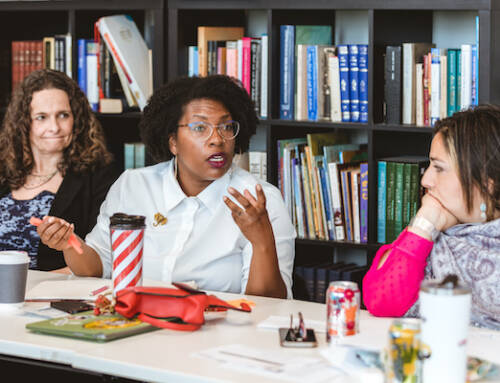We often perceive Chanukah as a celebration of the triumph of maintaining what is precious and valued in the face of potential overwhelming, annihilating change. The Macabbees fought the Greeks and the Hellenists those Jews who were over-eager to abandon their own traditions and adopt new ones and they triumphed, restoring the Temple to what it was, saving Jewish values and culture.
Perhaps, though, we are actually celebrating the opposite of this traditional perspective. Perhaps Chanukah is a commemoration of the fact that we were flexible, malleable, and, yes, impressionable enough, to change, to grow, and, therefore, to survive.
Rabbi Yitz Greenberg, in his book The Jewish Way: Living the Jewish Holidays, argues that:
Even as they fought the cultural battle, the Maccabees and, later, the Pharisees did not simply reject Hellenism. They were profoundly touched by its individualism, its methods of analysis, literary rhetoric, and its theological concepts. They absorbed a great deal, but they gave a distinctively Jewish cast to the outside ideas and rejected many others.
According to this perspective, on Chanukah we appload our ability to encounter ideas, cultures, and values that challenge our own, and be affected by them. Not so affected that we disappear within them, but not so cloistered that we shut them out to our own detriment.
The Talmud, in tractate Shabbat, recounts a famous dispute between Beit Hillel and Beit Shammai, two schools of thought in the first century C.E, that here disagree about the laws involved in the central ritual of observing Chanukah lighting the Chanukiah:
Those who seek to fulfill the law in the best possible manner (mehadrin min hamehadrin) should light in the following manner: According to Beit Shammai eight flames on the first night, and one flame less on each subsequent night; and the reverse according to Beit Hillel one lamp on the first night, and one more each succeeding night. (Shabbat 21b)
This argument reveals a deeply held attitudinal clash about the nature of what we commemorate on this holiday, and how we should approach that pivotal question that plagues us still today: how, as a Jewish people living in a diverse world, can we survive?
We know something about the characters of these two schools of thought from another excerpt in the Talmud, in Eruvin 13b, which recounts a story of a debate between the two schools that lasted for three years. Finally, a voice from heaven descends and claims that though both opinions are the words of the living God elu velu divrei Elokim chayim, though Hillel and Shammai each hold two conflicting and equally authoritative truths, the law is to be according to the house of Hillel. Why? Because they were kind and humble, and they would teach their views as well as those of the School of Shammai. And not only that, but they would teach the views of the followers of Shammai before their own.
In this case, when the content is equally valid, the focus turns to the approach. And the approach that is here celebrated is one in which multiple voices and perspectives are given space. The disagreement about how to light Chanukah candles is a visual metaphor for these different approaches. Shammai encounters a world of multiple voices and perspectives eight candles dancing mischievously, each hot with its own flame and implies that our survival, our triumph, involves whittling away until we have found the one true candle, the one unchallenged voice, burning strong and bright, alone.
Hillel, on the other hand, ventures that we begin in our own world, with our own unique light, but acknowledges that it is inevitable that we encounter another, a different light, that stands next to ours. And then a third, and a fourth, until, finally, we are surrounded by multiple lights, multiple voices, multiple possibilities. As a result, our original candle is altered, affected, perhaps less bright. But it has not been extinguished. It can burn strong even in the midst of all the others, maybe even because of all the others.
In lighting according to the view of Beit Hillel, we embrace the perspective of the strength of multiple lights. We embrace the approach of including other voices, conflicting voices, with our own. And we acknowledge that the possibility of surviving and thriving depends on this approach. As Greenberg puts it: in general, the Jewish way implies the need and willingness to go into and through many cultures participating, learning, filtering, incorporating, handling. Exposure and integration are the keys to coping, although overexposure can lead to a blank or totally dark record.
Our survival depends on our ability to grow and change. And growth depends on exposure, especially to those who challenge and disagree with us. In his book Where Good Ideas Come From: The Natural History of Innovation, Steven Johnson refers to an idea called the adjacent possible, coined by a scientist named Stuart Kauffman:
Think of it as a house that magically expands with each door you open. You begin in a room with four doors, each leading to a new room that you havent visited yet. Those four rooms are the adjacent possible. But once you open one of those doors and stroll into that room, three new doors appear, each leading to a brand-new room that you couldnt have reached from your original starting point. Keep opening new doors, and eventually youll have built a palace.
The overflowing, dancing eighth-night Chanukiah of Beit Hillel is a visual manifestation of the adjacent possible. The first candle opens the door to the second, the second to the third, the sixth to the seventh, the seventh to the eighth. The rich diversity of opinions and disagreements within the Jewish community, and between the Jewish community and other cultures and religions, is precisely what allows us to continue to innovate, thereby simultaneously preserving what is precious to us, and ensuring that when the winds blow into the palace, we are not alone, not one lone candle but eight strong, flickering together.
This piece was crossposted on e-jewishphilanthropy.com.
Our purpose is to enable entrepreneurs to bring bold Jewish ideas to light. We help them reach Up to people in new ways that are meaningful, more inclusive, and create a brighter future for our Jewish community and the world we share.




